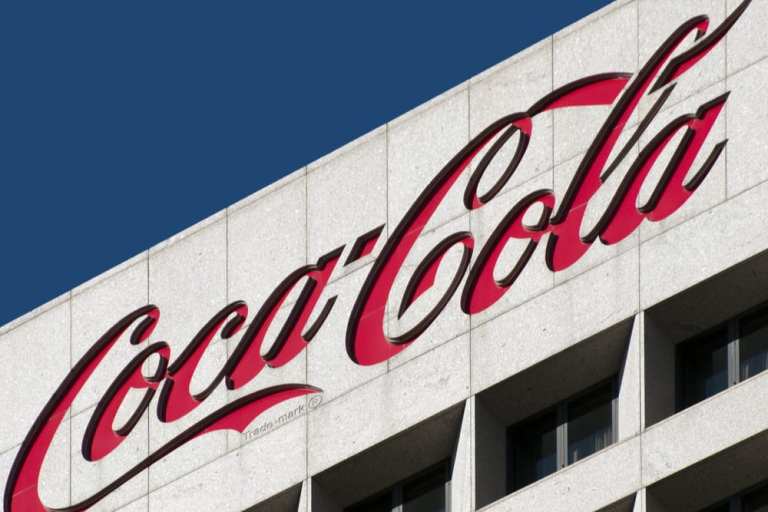COVID-19, Coca-Cola And Changing Consumption Habits

As the COVID-19 pandemic has slammed America, the collateral damage to the U.S. economy has spread far and wide. Some of the ripples like a halt to tourism and in-restaurant dining amid social-distancing rules were easy to foresee. But others – like lower Coca-Cola sales – weren’t.
Coke reported this week that its global sales volume is down by a quarter since April began, and warned that a bounce-back might take quite some time. “We may be at the end of the big global lockdown, but we are still a long way from the new normal,” CEO James Quincey said on a call with analysts.
Some of Coke’s troubles are production related. Chinese Coca-Cola plants are operating again, but capacity is still hampered by social-distancing requirements at work in Shanghai.
But the bigger issue is falling demand for Coca-Cola products in general as consumers worldwide are mired in their residences — and thus failing to have a Coke and a smile along with their meals, movies or other activities outside the home. It turns outs that about half of all the Coca-Cola consumed is sold in away-from-home retail channels like restaurants, bars or large-venue events like concerts or sports contests.
But all of those channels are shut down for the time being, and thus not selling Cokes. Moreover, CEO Quincey noted in his analyst call that as a global economic downturn has set in, consumers have become more dedicated belt-tighteners bent on subtracting luxury items from their shopping lists.
He expects to see “a very profound theme of affordability” as shoppers brace for an economic downturn. “As the virus crisis abates, economic crisis will be the next phase,” Quincey said.
The executive said that as changing consumer appetites for both out-of-the-home activities and big expenditures become the status quo, the beverage giant will investigate how to redesign products to match such new and emerging preferences. Quincey said that could include things like refillable bottles, smaller packages and multipacks — all with lower price points.
The beverage giant is also canceling smaller projects in its R&D pipeline to focus resources on developing products that could scale more easily, according to its CEO. “You tend to go back to what is known,” Quincey said. “There will be some favoring of tried and trusted in the short term.”
Another focus for Coca-Cola will be pushing back to the classic grocery-distribution channel, as well as helping to simplify those supply chains.
But will it work? Can Coca-Cola find a way to catch the rising tide of changing consumption patterns and relocate those out-of-the-house sales back toward the home-based consumer?
Efforts are early, and so far the only thing that can definitely be said is that we’ll have to watch the initiative to see how it plays out. But the marketplace isn’t quite devoid of data about beverage makers re-centering their sales around consumers practicing social distancing.
Big Alcohol is Feeling Quite A Buzz
For example, alcohol sales have managed to transition neatly away from bars and restaurants and into consumer cabinets. A Nielsen analysis of sales through grocery stores and other retailers between March 29 and April 4 found that beer and cider sales were approximately one-fifth higher than they were last year.
Broader alcohol sales were also up by a quarter, driven by an even higher spike in wine and liquor sales, according to NBC News. Alcohol beverage industry analyst Bump Williams told NBC that the spike mainly came from customers buying big in anticipation of hunkering down. Economy-size cases from the biggest brands such as Budweiser and Coors sold well.
But Craft Brewers Face Headaches
That’s good news for major manufacturers, but not quite good news for the smaller craft brewers that often supply restaurants and bars where orders have stalled. Some 70 percent of craft brewers reported this month that business is down by more than half, according to a Brewers Association poll.
“This is about the survival of our company,” Gary Fish, founder of Deschutes Brewery in Oregon told NBC before noting that his firm has had to lay off two-thirds of its close to 500-person staff. “There were some pretty gut-wrenching decisions we had to make,” Fish said. “These people are our friends, our family.”
And the smaller the brewer, the bigger the troubles, Brewers Association chief economist Bart Watson noted, as they have the fewest places to pivot during a downturn.
What Does This Mean For Coke?
Coca-Cola, of course, isn’t a small brand — and it sells a diverse array of beverages from Power Aid to bottled water. But will consumers seek to stock up on their Coke products with the enthusiasm they’ve set to stocking up on beer and wine? So far not so much, sales results indicate.
But bigger firms have more pivot points — to both ride out the current storm and adjust their behavior to the new normal … whenever that should emerge.